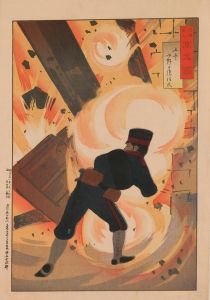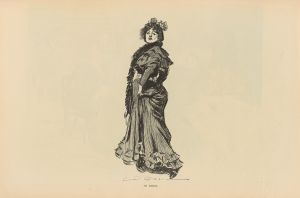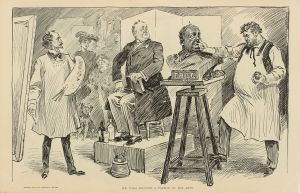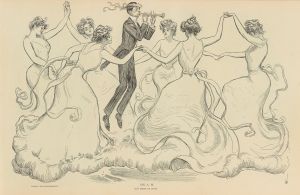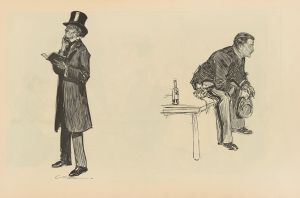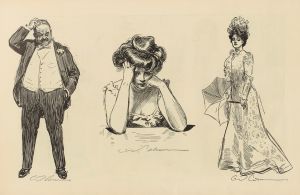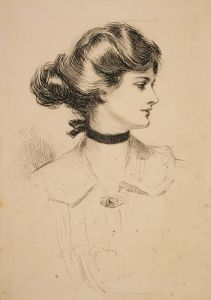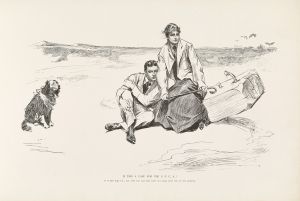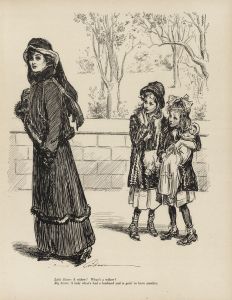
All’s well that ends well
A hand-painted replica of Charles Dana Gibson’s masterpiece All’s well that ends well, meticulously crafted by professional artists to capture the true essence of the original. Each piece is created with museum-quality canvas and rare mineral pigments, carefully painted by experienced artists with delicate brushstrokes and rich, layered colors to perfectly recreate the texture of the original artwork. Unlike machine-printed reproductions, this hand-painted version brings the painting to life, infused with the artist’s emotions and skill in every stroke. Whether for personal collection or home decoration, it instantly elevates the artistic atmosphere of any space.
Charles Dana Gibson was an influential American illustrator, best known for his creation of the "Gibson Girl," a representation of the idealized American woman at the turn of the 20th century. His work was widely published in magazines such as Life, Scribner's, and Harper's, and he became one of the most celebrated illustrators of his time. One of his notable works is the illustration titled "All's Well That Ends Well."
"All's Well That Ends Well" by Charles Dana Gibson is an illustration that captures the essence of his artistic style and thematic focus. Gibson's illustrations often depicted social scenes and interactions, reflecting the cultural and societal norms of his era. His work is characterized by its detailed line work and the ability to convey emotion and narrative through visual art.
The illustration "All's Well That Ends Well" is part of Gibson's broader body of work that often explored themes of romance, social status, and the dynamics between men and women. While specific details about this particular illustration are limited, it can be inferred that, like many of Gibson's works, it likely features characters that embody the elegance and sophistication associated with the Gibson Girl and her male counterparts.
Gibson's illustrations were not just artistic expressions but also commentaries on the social dynamics of his time. The Gibson Girl, for instance, was seen as a symbol of the new, independent woman who was both beautiful and intelligent. This character challenged the traditional roles of women in society and became an icon of female empowerment. Similarly, "All's Well That Ends Well" would have been part of this broader narrative, capturing the complexities of relationships and societal expectations.
Gibson's influence extended beyond his illustrations. The Gibson Girl became a cultural phenomenon, influencing fashion, literature, and even the feminist movement. His work provided a lens through which the changing roles of women in society could be viewed and discussed. The popularity of his illustrations helped to cement his legacy as a pivotal figure in American art and culture.
While specific information about the context or reception of "All's Well That Ends Well" is not extensively documented, it remains a part of Gibson's celebrated oeuvre. His ability to capture the spirit of his time through art continues to be appreciated by art historians and enthusiasts alike. Gibson's work, including "All's Well That Ends Well," remains a testament to his skill as an illustrator and his keen observation of the world around him.







